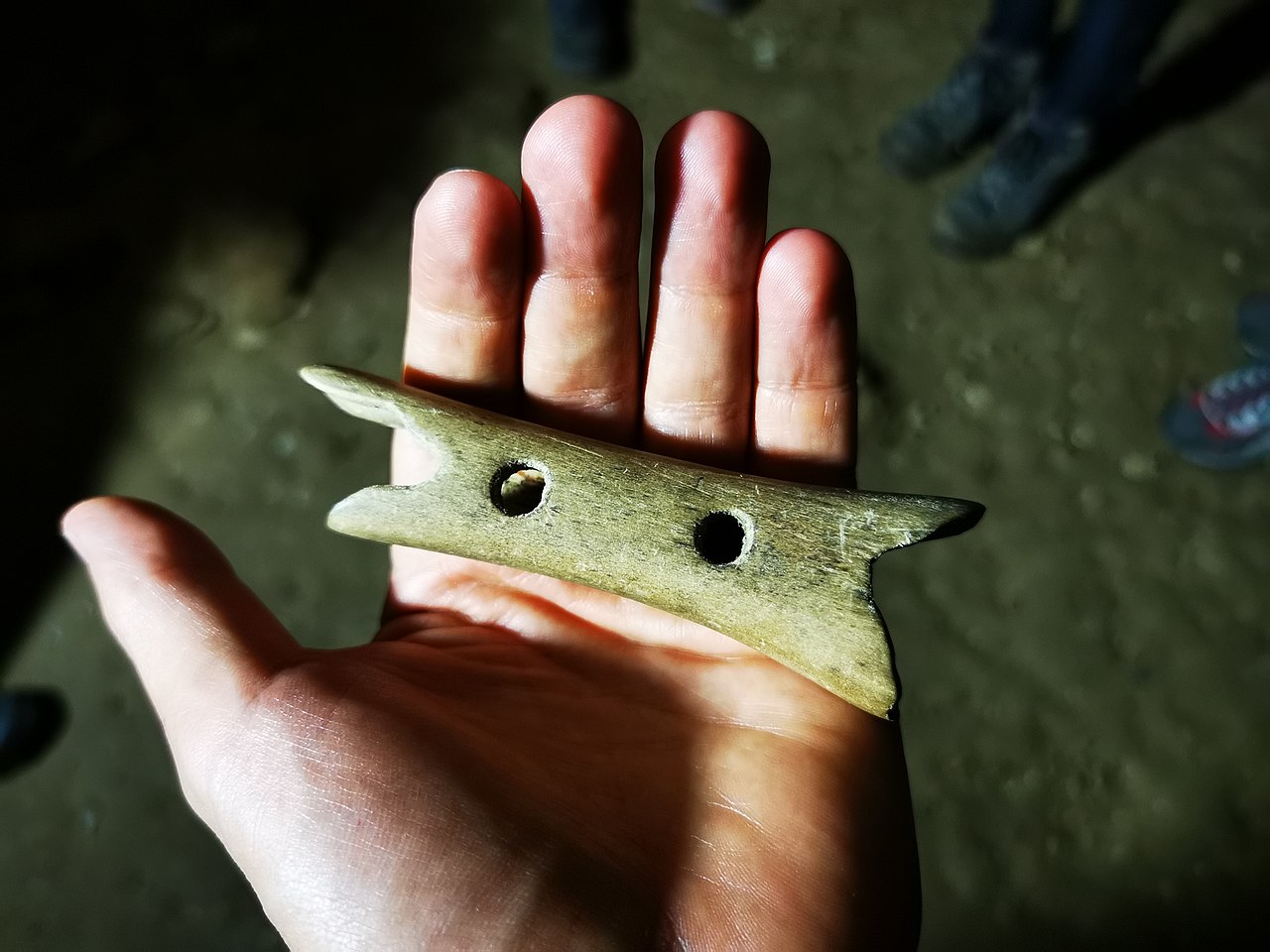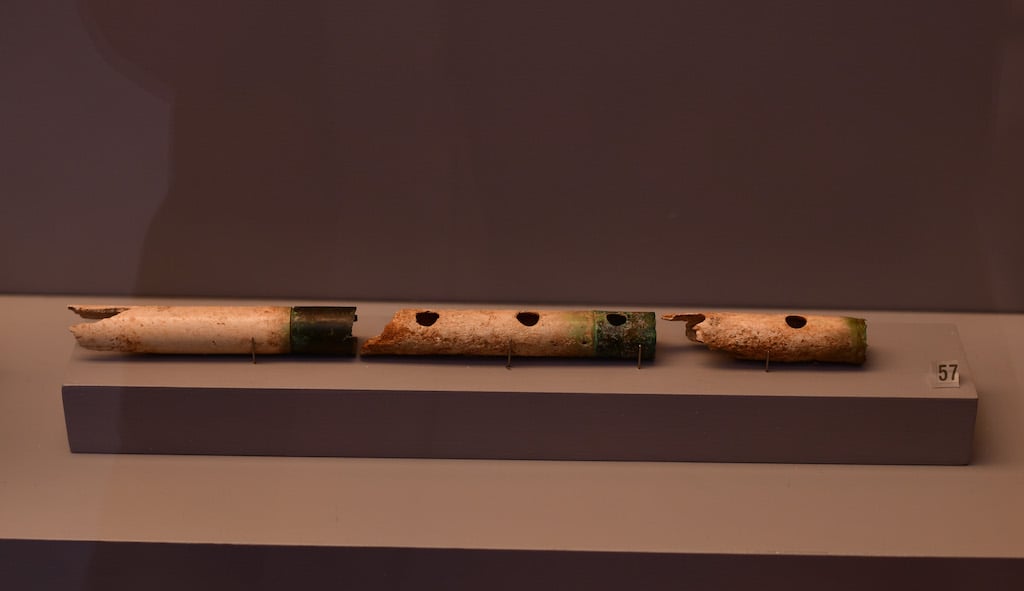Have you ever wondered when humans started making music? Well, the answer dates back well beyond ancient civilizations such as the Egyptians and the Mesopotamians, to a time even before homo sapiens.
It traces back to the age of Neanderthals, but was only discovered in the last 30 years.

It was found in the Divje Babe cave in Slovenia in 1995, in an expedition led by archaeologist Ivan Turk. Experts say that the instrument is over 50,000 years old.
Archaeologists believe that the instrument, which is similar to a modern-day flute, was made by Neanderthals, and even though there was only a fragment discovered, it can still tell us a lot about Neanderthal life at the time.
How was it made and what was it made from?
The instrument is a flute-esque creation, undeniably intended to create sound. It was crafted from the left thigh bone of a cave bear, and the bone includes four pierced holes that could not have been caused accidentally or from any kind of animal bite.
Read More: How the Cold War dug the deepest hole in the world
After attempting to recreate the ancient bone flute, archaeologists concluded that it would have been made using a sharp piece of flint stone and a bone punch. Experts found these tools in the cave where the flute was discovered.
What does this tell us about Neanderthals?
While we knew that Neanderthals were the closest species to humans, the discovery of the flute revealed, for the first time, they could express themselves musically. It proves that music is an inherent characteristic of homo sapiens – a primal expression rather than the fine-tuned version of instruments that we have developed today.

The first homo sapiens instrument
The first ‘man-made’ instrument dates back to 42-43,000 years ago. It was discovered in 2008, in a cave in southern Germany. This version was crafted from a vulture’s bone, instead of a bear’s, and found alongside more bone flute fragments from mammoths. These stone age instruments are in slightly better condition than the Neanderthal’s, as the vulture bone flute comes with a V-shaped mouthpiece and five finger holes.
The flutes made from mammoth bones would have been especially hard to create; the maker would have had to perfectly split the bone down the middle, along the natural grain using inaccurate stone tools.
According to researchers, the developing Homo sapiens may have gained an advantage over Neanderthals through advanced music techniques. The ancient flutes are evidence of an early musical tradition that potentially helped modern humans communicate better and form tighter social bonds than their Neanderthal predecessors.
Many of the oldest instruments on record are wind instruments. The Ch’ie is a form of flute found in China and dates back to 900 BC. The ‘western flute’ was patented in 1847 by a man named Theobald Boehm, and displayed in 1851.





